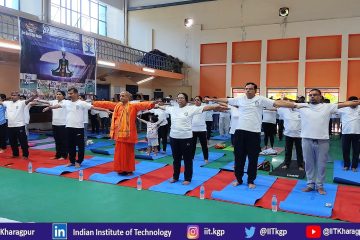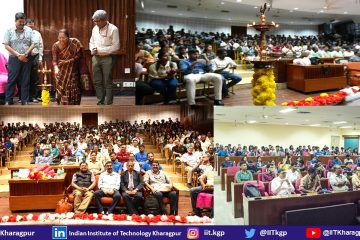
Indian Institute of Technology Kharagpur is geared up to bolster Professional Partnerships, expand Study Abroad Programs and initiate Research Collaborations with select Global universities. In line with this, the Department of Architecture and Regional Planning has come up with its second collaborative research programme with the Department of Urban Studies and Planning, Massachusetts Institute of Technology USA. The topic of research is “Integrating Brownfield Sites of India into the Urban Fabric”.
Brownfield redevelopment is relatively new within the Indian context. Given that remediation projects wherever applicable are long-term commitments; careful ex-ante planning is required to ensure the resulting projects are economic and effective. As yet, no standard definition or guideline for brownfield redevelopment is available in India. There is a scarcity of planning instruments, which are needed to manage complex spatial information and to provide planners with actionable results. US being one of the pioneer countries to have adopted a successful Urban Brown Development (UBD) Policy, this study would compare urban brownfield sites in different contexts in the US and document planning options for the range of stakeholders involved in redevelopment procedures.
As part of this project a team of students led by Prof. Subrata Chattopadhyay and Prof. Haimanti Banerji along with Prof. Brent D. Ryan from MIT visited many brownfield sites in the US in June 2019 and has done exhaustive documentation of the successful models and planning policies. UBD in the United States is handled by various acts, legislations and development protocols at the federal, state and local levels. To have a holistic understanding of the process, the team visited 8 towns in three states viz: Michigan, Pennsylvania and Massachusetts. Various models of brownfield development were observed.
The town of Flint had adopted a community participation approach and has developed public green space popularly known as Chevy Commons on the site where the Chevrolet factory was earlier located. Detroit has a well-established Brownfield Redevelopment Authority which approves and manages re-development of all brownfield sites in the town and encourages the involvement of private developers in the process within some established development protocols and zoning regulations. Bethlehem, a steel manufacturing town, north of Philadelphia, once known for supplying steel to Golden Gate Bridge was taken over by Leigh Valley Planning Commission who has developed revenue-generating facilities like hotels, warehouse for Walmart, visitors’ centre and a Cassino by integrating the massive original machinery and the structures. This can be considered as an ideal example of Industrial Heritage. Philadelphia, on the other hand, has developed the unused piers on the river Delaware into vibrant public places and has integrated the same into the city master plan. The towns of Lawrence and Lowell in northern parts of Massachusetts have ventured into developing affordable housing in place of closed down mills. The interiors have been meticulously worked out so that the residential spaces can be best fitted into the huge factory bays.
This exposure will help the IIT team to further develop planning instruments in India that would combine environmental, economic and social concerns.
The team from MIT led by Prof. Brent D. Ryan will visit India in January 2019 for an assessment of urban brownfields in the country. The objective would be to generate and analyze pragmatic urban brownfield development scenarios within the contexts of environmental contamination, community preferences, regulatory constraints and economic viabilities for the study area, proposing the best fit solution. These preliminary findings could be translated to state-level policies or guidelines which would act as a road-map for other Indian cities for prioritizing, planning, redeveloping, and financing Brownfield sites integrating the same to the urban fabric.
This collaboration will facilitate interaction between a bi-national team of scholars, practitioners, policy-makers, faculty and graduate students from both MIT and IIT. Ideas generated during proposed workshops and seminars will suggest road maps for Indian planners and policymakers. US faculty and students will learn about emerging challenges in socio-economic, policy, and urban design that confront the study areas in particular and India in general and can transfer lessons back to the US context.



